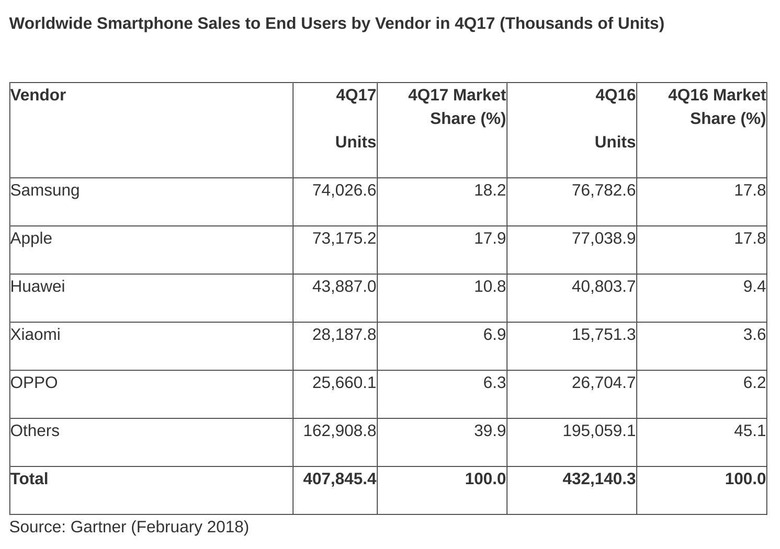High-End Smartphones Are Setting Themselves Up For Trouble
Every year, the likes of Samsung, Apple, and, recently, Google set the bar higher for smartphones. This year and last, they have also pushed the price bar higher than ever before. It was somewhat necessary to recoup the costs of R&D, production, marketing, and the like. It also helped inflate the smartphones' status as premium products to die for. But while these companies celebrate and gloat over positive reception and sales, the victory might be short-lived and short-term. All because these high-end smartphones may be digging their own graves in the long run.
Higher prices, lower numbers
There is a certain irony in the mobile industry where hardware components are becoming more available, sometimes cheaper but smartphones are getting more expensive. High-end components, of course, are more expensive than more common ones, but the rate of price increase doesn't seem proportional to the build costs. The gap seems to grow even more for each new generation of smartphones.
Business considerations aside, this rise in prices has a double-edged effect on consumers. On the one hand, they paint the picture of a product that only a few can afford, which has the ironic effect of making it even more desirable. They become the ultimate lifestyle choice, a game Apple has been playing for decades.
On the other hand, it is actually and factually something very few people can afford. That ultimately meant that fewer people actually bought the new phones, which may have contributed to last month's decline in smartphone shipments last quarter, when the most expensive non-luxury phones shipped for the first time. While there are sayings that advocate quality over quantity, that adage may not always apply, especially in business.

Fast cycles, slow turnovers
The lower sales numbers become an even bigger problem in the context of the current practice of releasing flagship smartphones every year. Some, like Samsung, even release twice a year. Others release multiple ones at the same time or spread them over the months. Long story short, there are dozens of new phones every year.
It might no longer be a sustainable pattern in the near future. User buying habits are changing and, ironically, manufacturers have no one to blame but themselves. In the past, users would often upgrade every two years. Fans would upgrade to a new model every year if there's an offer for them. But not only are manufacturers making their flagship products more expensive, they've also filled them with hardware that doesn't become obsolete outdated in just two years. And the annual or bi-annual releases means that the differences between models get fewer and fewer. In other words, OEMs have practically given consumers fewer reasons to upgrade frequently.
Of course, that's a win for consumers, as they are getting their money's worth. The disappointing sales, however, could severely hurt manufacturers. Even worse, it could push manufacturers to use "planned obsolescence" to force users to upgrade their phones, just like what Apple has been recently accused of.
Mid-range Revolution
Those problems might not have significant effect until much later on but high-end smartphones today already have a bigger threat to deal with. Mid-range phones are on the rise and they are proving to be more than just cheap alternatives when you can't afford a fancy premium model. Politics and conspiracies aside, many of these phones have more or less caught up in terms of features and performance. Yes, they may not have the fanciest design, the most advanced hardware, or the best cameras, but they are not exactly worse off for that either. They sometimes even have bigger batteries, longer battery lives, bolder designs, and more daring features. And they're more affordable, too!

And then there are always the likes of Essential and OnePlus that offer almost the exact same high-end specs but sell almost at a cost. Unless they drastically change their strategies for the worst, they will always be gnawing away at the giants' share of the pie.
Wrap-up
The smartphone market is changing. User habits are also changing. Smartphone vendors aren't. Some, like LG and HTC, may have noticed, but only because they were already at the lower end of the race. Samsung may have seen clues, but it isn't one to change directions so quickly. And Apple is one that's unlikely to change at all. High-end smartphones are becoming luxury items that very few can afford. And whatever few can afford, very few will buy. And that may spell trouble for the companies that rely on them to survive.
